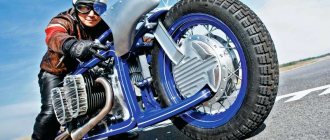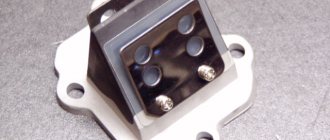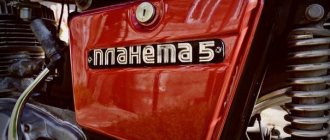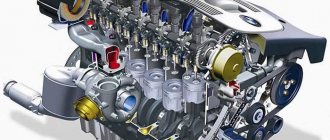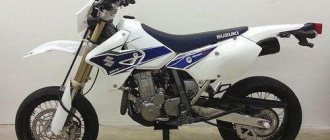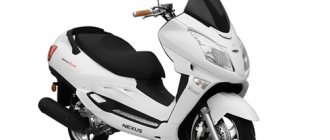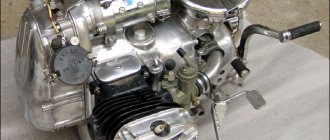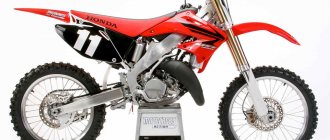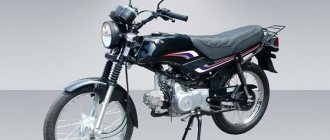Creator – Felix Wankel
Rotary engine
There is an old story that Wankel invented the miracle engine in 1919. It was always hard to believe in her: how could a 17-year-old boy, albeit talented, do such a thing? To do this, you need to undergo training somewhere at a university, learn how to design and draw... Much more likely is information about the first sketches of the engine from 1924, which Wankel made after graduating from high school and going to work at a technical literature publishing house. While shoveling mountains of waste paper, you can either lose interest in technology forever, or start designing it yourself. Apparently, Felix’s soul was in design.
He opened his own workshop in the city of Heidelberg, and in 1927 the drawings of a “machine with rotating pistons” (abbreviated DKM in German) were born. Felix Wankel received his first patent, DRP 507584, in 1929, and in 1934 he applied for the DKM engine. True, he received a patent two years later. Then, in 1936, Wankel settled in Lindau, where he located his laboratory.
Felix Wankel
Then the authorities noticed the promising designer, and work on DKM had to be abandoned. Wankel worked for BMW, Daimler and DVL, the main aircraft engine manufacturers of Nazi Germany. So it is not surprising that before 1946 Wankel had to sit in prison as an accomplice of the regime. The French took the laboratory to Lindau, and Felix was simply left with nothing.
Only in 1951 did Wankel get a job at a motorcycle company - the then widely known NSU. While restoring the laboratory, he interested Walter Freude, a designer of racing motorcycles, with his designs. Together, Wankel and Freude pushed the project through management, and engine development accelerated dramatically. On February 1, 1957, the first rotary engine DKM-54 started operating. It ran on methanol, but by June the engine, which had worked 100 hours on the stand, was switched to gasoline.
Device problems and their resolution
Felix Wankel managed to overcome most of the problems that caused previous rotary devices to fail:
- Rotary RPMs have a problem not found in four-stroke piston units, in which the block housing has intake, compression, combustion and exhaust gases flowing at fixed locations around the housing. The use of heat pipes in air-cooled Wankel rotary engines was proposed by the University of Florida to overcome uneven heating of the housing block. Preheating some body sections with exhaust gases improved performance and fuel economy, while also reducing wear and emissions.
- Problems also arose during research in the 50s and 60s. For some time, engineers had been confronted with what they called a “devil's scratch” on the inner surface of the epitrochoid. They discovered that the cause was pinpoint compactions reaching resonant vibration. This problem was solved by reducing the thickness and weight of the mechanical seals. The scratches disappeared after the introduction of more compatible sealing and coating materials.
- Another early problem was the growth of cracks on the stator surface near the plug hole, which was eliminated by installing the spark plugs in a separate metal insert, a copper bushing in the housing instead of a plug screwed directly into the block housing.
- Four-stroke piston devices are not very suitable for use with hydrogen fuel. Another problem is related to hydration on the lubricant film in piston designs. In Wankel internal combustion engines, this problem can be circumvented by using a ceramic mechanical seal on the same surface, so that there is no oil film to suffer from hydration. The piston shell must be lubricated and cooled with oil. This significantly increases the consumption of lubricating oil in a four-stroke hydrogen internal combustion engine.
This is interesting: Citroen C5 review with photos
Operating principles of a rotary engine
Wankel engine cycle
But then Freude proposed a new concept for a rotary engine! In the Wankel engine (DKM), the rotor rotated around a stationary shaft together with the combustion chamber, which ensured the absence of vibrations. Walter decided to fix the combustion chamber, and let the rotor drive the shaft, that is, use the principle of dual rotation for a rotary engine. This type of rotary engine was designated KKM.
Wankel himself patented the principle of rotation duality in 1954, but he still used the DKM principle. It must be said that Wankel did not like the idea of such an inversion, but he could not do anything - the engine of his favorite DKM type had labor-intensive maintenance; in order to change the spark plugs, disassembling the engine was required. So the KKM type engine had much more prospects. Its first sample spun on July 7, 1958 (although it still had spark plugs in the rotor, like the DKM). Subsequently, the spark plugs were transferred to the engine body, and it acquired its appearance, which has not fundamentally changed to this day. Now all rotary engines are designed according to this scheme. Sometimes they are called "wankels", in honor of the developer.
In such an engine, the role of the piston is played by the rotor itself. The cylinder is a stator shaped like an epitrochoid, and when the rotor seals move along the surface of the stator, chambers are formed in which the fuel combustion process occurs. During one revolution of the rotor, this process occurs three times, and thanks to the combination of the shapes of the rotor and stator, the number of strokes is the same as that of a conventional internal combustion engine: intake, compression, power stroke and exhaust. An animation of the rotary engine can be viewed here.
A rotary engine does not have a gas distribution system - the rotor operates the gas distribution mechanism. He opens and closes the windows himself at the right time. It also does not need balance shafts; the two-section engine can be compared to multi-cylinder internal combustion engines in terms of vibration levels. So the idea of a rotary engine in the late fifties seemed like a stepping stone for the automotive industry into a brighter future.
Mixing formation
In theory, several types of mixture formation are used in RPD: external and internal, based on liquid, solid, and gaseous fuels. Regarding solid fuels, it is worth noting that they are initially gasified in gas generators, as they lead to increased ash formation in the cylinders. Therefore, gaseous and liquid fuels have become more widespread in practice. The mechanism of mixture formation in Wankel engines will depend on the type of fuel used. When using gaseous fuel, it is mixed with air in a special compartment at the engine inlet. The combustible mixture enters the cylinders in finished form.
The mixture is prepared from liquid fuel as follows:
- The air is mixed with liquid fuel before entering the cylinders, where the combustible mixture enters.
- Liquid fuel and air enter the engine cylinders separately, and they are mixed inside the cylinder. The working mixture is obtained when they come into contact with residual gases.
Accordingly, the fuel-air mixture can be prepared outside the cylinders or inside them. This leads to the separation of engines with internal or external mixture formation.
To the series!
NSU Spider
Post-war Germany began to slowly become richer, and cars sold better and better. NSU worked on this front, and the key point of its model range was to be the Wankel engines. Already in 1958, work was underway to create a car with a rotary engine, and in 1960 it was shown to the public at a conference of German designers in Munich. The car, called NSU Spider, was equipped with a Wankel engine that developed 54 hp. Many will grin, but for a small spider it was just right - it accelerated to 150 km/h. The Spider was produced from 1964 to 1967.
NSU Ro-80
The main car that brought Wankel fame was the NSU Ro-80, introduced in 1967. Already in its name are encrypted claims to leadership: “Ro” means “rotary”, and 80... Something like “a car of the 80s”. The car set new rules for the exterior of sedans: clean lines, a large degree of glazing, a trunk higher than the hood... The influence of the Ro-80 design is felt in the Audi 100. Thanks to the small size of the rotary engine, the front part of the car was lowered and narrowed, so the aerodynamic drag coefficient decreased compared to its classmates by 25%. The sedan was equipped with a two-section Wankel engine with a displacement of 2 x 497.5 cm3.
The engine developed a power of 115 hp, accelerating the new product to 180 km/h, and 100 km/h from a standstill was reached in 12.8 seconds. The success was colossal. The Ro80 immediately won the title of "Car of 1967" and the rotary engine became a popular theme at auto shows. Many automakers have purchased licenses to produce Wankel engines, but...
The matter usually did not reach mass production. The topic turned out to be not as simple as it seemed. And it’s all to blame...
Design
One of the main advantages of this unit is its compactness and lighter weight compared to classic engines of the same volume. The layout allows you to significantly reduce the center of gravity, and this has a beneficial effect on stability and control acuity. This advantage has been and is being used by small aircraft, sports cars and motorcycles.
Congenital defects
The most promising scheme has serious drawbacks, which will be expensive and difficult to overcome.
The combustion chamber of a rotary engine is elongated, like the crescent of a young moon. Naturally, heat losses over a larger area than in a conventional cylinder lead to a high heat load on the engine and lower efficiency. In such a combustion chamber, effective mixing of the working mixture does not occur, and then - poor efficiency and environmental friendliness.
From a technologist's point of view, a rotary engine is far from a gift. Unlike conventional piston engines, in which the fuel combustion process occurs alternately in different cylinders, and in between, the combustion chamber is cooled during the intake stroke by the working mixture, a rotary engine has only one combustion chamber that operates constantly. Therefore, the rotor must be resistant to temperature changes when the heated surface begins to cool the working mixture through a stroke.
Another problem is seals. In a piston internal combustion engine, the rings operate at the same operating angle. In a rotary engine, when the rotor slides at its angles on the surface of the stator, the seals have to work at different angles. Naturally, friction has to be reduced by injecting oil directly into the manifold. Environmental friendliness suffers even more...
Well, just for the record: a rotary engine simply cannot run on diesel fuel. It will not withstand the kind of loads that are typical of a diesel engine.
RPD in the West
In the West, the rotary engine did not produce a boom, and its development in the USA and Europe was put an end to the fuel crisis of 1973, when gasoline prices soared and car buyers began to ask the price of models with economical fuel consumption.
Considering that the rotary engine consumed up to 20 liters of gasoline per hundred kilometers, its sales during the crisis fell to the limit.
The only country in the East that did not lose faith was Japan. But even there, manufacturers quickly lost interest in the engine, which did not want to improve. And in the end, there was one persistent tin soldier left - the Mazda company. In the USSR, the fuel crisis was not felt. The production of vehicles with RPD continued after the collapse of the Union. VAZ stopped working on RPD only in 2004. Mazda came to terms only in 2012.
Cars with Wankel engine
NSU Ro-80
From the very beginning of work on the rotary engine, NSU made no secret of this. Any car company could buy a license to produce a new engine, and buyers were immediately found. Daimler Benz, GM, Mazda, Citroen, Toyota... Many of them wanted a cheap and powerful engine, but when faced with reliability and operation problems, they stopped development. And NSU itself burned down precisely during operation. Inexperienced buyers simply burned the engines, over-twisting them beyond any limits. Engine reliability in such conditions was too low. And then there are the fuel crises! Fuel consumption for the Ro-80 ranged from 15 to 17.5 liters per 100 km...
Financial problems drove NSU into a hole from which it was never destined to escape: in 1969, it was swallowed up whole by Volkswagen. This ended the serial production of rotary cars in Germany.
But there were experimental machines. Mercedes Benz was working on a supercar with a rotary engine. The prototype appeared in 1969 and was equipped with a three-section rotary engine with a volume of each section of 600 cm3 and a power of 280 horsepower. A light car with a plastic body accelerated to 257.5 km/h, and to “hundreds” in five seconds.
Mercedes C111
A year later, at the Geneva Motor Show, the second generation C111 was presented to the public. The car had a super streamlined body for those times, its Cx was within 0.325. The engine received another section and now developed 350 hp. The driver of such a car could drive at a speed of 300 km/h, and thanks to the redesigned and strengthened body frame, he enjoyed the car's behavior in corners. The second sample accelerated to 100 km/h even faster - in 4.8 seconds the orange wedge-shaped car reached the magic mark and continued to pick up speed.
Gulfwing fans were already lining up for the new Wing, but Mercedes had no intention of producing remakes of its legend. These machines were needed to test the new engine, but even MB was unable to cope with the main problem of the rotary engine - its gluttony was colossal. Thus, the oil crises ruined the German direction of developing Wankels.
Chevrolet Corvette
Overseas they also looked closely at the Wankel engine. Chevrolet received a license to manufacture rotary engines and in 1970 began developing Corvettes with two- and four-unit engines. The fiberglass model with the engine in the base received the approval of GM President Ed Cole in June 1971. A year later, in June 1972, the steel-bodied Corvette with a two-piece rotary engine was presented to the GM board and designated the XP-987GT.
By January 1973, the Corvette with a four-section engine was assembled, and in April it was blown in a wind tunnel in California. Corvette with two-piece rotor producing 266 hp. exhibited to the public on September 13, 1973 in Frankfurt, and its brother with a four-section heart and a power of 390 hp. appeared at the Paris Salon on October 4 of the same year. But on September 24, 1974, Ed Cole shelved development of the Wankel-powered Corvette due to production difficulties.
The German idea was also adopted in neighboring France. The French began collaborating with NSU in 1964, forming the Comotor company with a German partner. In 1973, Citroen completed development of the rotary engine and in 1974 the Citroen GS Birotor went into production.
Citroen GS Birotor
The car was equipped with a two-section rotary engine with a volume of 2 x 498 cm3, developing 107 horsepower at 5500 rpm. The working mixture was supplied to the Wankel by two Solex carburetors. The machines are also equipped with semi-automatic and hydraulic suspension. When the engine is started, the Birotor rises off the ground (a Citroen tradition) and looks almost like a four-wheel drive. The interior was trimmed with fabric and vinyl, and additional equipment included a radio, tinted glass and a sunroof.
From March to August 1974, 750 Citroens with rotary engines left the plant. By the end of 1974, 93 more cars were made, and in 1975 only 31 GS Birotor rolled off the assembly line. In total, as it is not difficult to calculate, 874 Citroen GS Birotor were made. In 1977, the plant recalled the rotary machines to eliminate them. However, about 200 cars could have survived, but most are not registered anywhere. The likelihood of finding a live Birotor is greatest in France, and in general they were sold in Sweden, Great Britain, Germany, Denmark and the Netherlands.
But the Wankel idea acquired its most faithful and consistent admirer in distant Japan, where Mazda desperately needed a fresh idea to stand out among the rest. Then the samurai government came up with the idea of uniting the entire auto industry. But they refused it, and they did the right thing!
Mazda Cosmo Sport
Mazda's first car with a rotary engine was the Mazda Cosmo Sport coupe, the first example of which was shown at the Tokyo Motor Show in 1964. The first batch of 60 Cosmos was produced in 1965, but mass production began only in 1967.
The Series 1 Kosmos was equipped with a two-section 2 x 491 cm3 Wankel 10A 0810 engine with two Hitachi carburetors. This power plant developed a power of 110 hp. and accelerated a rather large car to 185 kilometers per hour. The car was driven by a 4-speed manual transmission and front independent suspension. The first series was produced from May 1967 to July 1968, 343 cars were made.
From July 1968, a second series of Cosmo Sport was produced. The car received a 10A 0813 engine with 128 horsepower, a five-speed gearbox, more powerful brakes and 15-inch brakes (the previous series had 14-inch ones). Now Cosmos could reach a speed of 120 miles per hour (or 193 km/h), and cover a four-hundred-meter distance when starting from a standstill in 15.8 seconds. Externally, the updated model could be distinguished by its enlarged “mouth” and slightly larger base. Until July 1972, 1176 cars were made, which is relatively good with manual assembly and the production rate of one car per day.
At the same time, from 1968 to 1973, a rotary modification of the Familia model was produced. The two-door coupe used the chassis of the regular Familia, but under the hood it had a 100 hp Wankel engine. from Space. The lower power of the 10A 0820 engine compared to the Cosmo is explained by the small size of the carburetor. For an inexpensive car, inexpensive materials were used - in particular, aluminum was replaced with cast iron. But the engine weight increased slightly, by 20 kg, and reached only 122 kg. The Familia R100 competed in the 24 Hours of Spa and Le Mans, where it lost only to 911s and BMWs.
Mazda Luce R130
The third model was the rear-wheel drive luxury coupe Luce. The front-engine car, designed by Giugiaro, was equipped with a Model 13A engine with a volume of 2 x 655 cm3, developing 126 horsepower. The Luce R130 could cover the quarter mile from a standstill in 16.9 seconds. This car was not supplied to the American market. The model was produced from 1969 to 1972.
In the 70s of the last century, the Japanese installed the Wankel engine on almost any of their new models, from Capella to pickup trucks and minibuses. It was during this decade that the RX brand was born, which means the same to Mazda as GTI does to Volkswagen. The rotary engine outperformed competitors in all respects, but unexpected financial losses forced the company's management. In 1970, the replacement Familia R100 appeared. The new Mazda RX2 was based on the Capella chassis with a conventional piston engine. The RX2 was offered to buyers with sedan and coupe bodies, which were only modifications of the same versions of the Capella model, differing from them in appearance only in nameplates. The main changes were hidden under the hood.
The RX2 was equipped with a 12A modification engine, having two sections with a total volume of 1146 cubic centimeters. The Wankel developed a power of 130 hp, which for a car weighing 1050 kg meant good dynamics even by today's standards. Such “hotness” of the model ensured her the love of fans. In 1974, the Mazda RX2 received a slightly improved engine, which allowed it to remain in production until 1978.
From October 1972, Mazda produced a large car, the Luce Rotary, which replaced the Luce R130. Three bodies - coupe, sedan and station wagon, a manual 4-speed gearbox and a 3-speed automatic were impressive. The car was sold with a 12A engine producing 130 hp, but since 1974 it was exported to America equipped with a 13B series engine and under the new name RX-4. This rotary engine consumed less fuel and met US emissions standards.
13V produced a power of 110 hp, which provided the coupe or sedan with a curb weight of about 1190 kg with good dynamics. The station wagon took part in tests by Road&Truck magazine in 1974 and showed quite acceptable results, despite its weight having increased to 1330 kg. Accelerating to 60 mph in 11.7 seconds, he covered 400 meters in 18 seconds, showing 124.5 km/h at the end of the measured segment. The magazine also noted the increased efficiency of the model, including it in the top ten “Best Buys in the price range of $3500-6000.” The car itself cost $4,250, but you had to pay extra for options like air conditioning ($395) or automatic transmission ($270). The model was produced for exactly five years, having undergone a body update in 1976.
Mazda Rotary Pickup
Since 1974, the first and so far only rotary pickup truck began to be sold on the American and Canadian car markets. Mazda sold it exclusively on the overseas market; it was not represented on the domestic market. The rotary model differed from the B-series pickups and their related Ford Courier in appearance - larger bumpers, different lines, a chrome front grille and round rear lights.
Under the hood of the Rotary Pickup was the familiar 13B engine, which gave the pickup a fair amount of sportiness. 15,000 machines were produced, most of which were sold in 1974, before the energy crisis. Due to the crisis, sales fell sharply; only about 700 cars were made for the 1976 model year. Mazda changed the design for the 1977 model year cars, updated the electronics, replaced the gearbox with a 5-speed one, and even lengthened the cabin by 10 cm for greater comfort, but that’s all. it was in vain. In 1977, the model was discontinued.
Mazda Parkway Rotary 26
Since July 1974, another rare model, the Parkway Rotary 26, was produced - the only bus in the world with a rotary engine. It was equipped with a model 13B engine with a displacement of 2 x 654 cm3, which already developed 135 hp. and had a low level of harmful substances in the exhaust gases. This power unit was controlled using a four-speed manual gearbox. The rather large bus (dimensions 6195 x 1980 x 2295 mm, curb weight 2835 kg) easily accelerated to a cruising speed of 120 km/h.
The Parkway received the nickname “twenty-six” for its capacity - in the standard DX configuration it had 26 passenger seats on board, which was reflected in its name. There was also a luxury version, Super DX, which could seat only thirteen people. The model was distinguished by a low level of vibration and silence in the cabin, which was ensured by the smooth operation of the rotary engine. Upon request, Parkway could be equipped with a ventilation system. Production completed in 1976.
In 1975, the Australian Holden branch of the Ford concern supplied its Japanese colleagues with a Premier executive class car for production under the Mazda brand. Car production was successfully mastered, but Holden did not give the Japanese engines suitable for a car weighing 1575 kg, and they adapted a Model 13B rotary engine under the hood of the large Mazda RoadPacer sedan. Since it was more powerful than those engines that Holden had, the maximum speed reached 166 km/h, but it clearly did not have enough torque. Acceleration was very weak, and the fuel consumption of the engine, which was not known for its poor appetite, went through the roof at 26 liters of gasoline per 100 km. Originally planned as a representative car, the car went on sale during the fuel crisis and naturally did not achieve success in the market. The unlucky RoadPacer was discontinued after three years.
Mazda RX-7
The latest, third generation RX-7 was a full-blooded Japanese sports car. Under the hood was a rotary engine model 13B-REW, equipped with two turbines located one behind the other. The system of operation of two turbines was developed together with Hitachi and tested on the Cosmo model, sold on the domestic market. The first turbine was small and started working at low engine speeds (from about 1800 rpm) so that “turbo lag” did not occur. The second turbine was larger and started working at 4000 rpm. Their joint work was so well-established that there was always “enough” torque.
The FD platform has been rated as a world-class development. Long-term work on improving driving performance, a refined chassis, a low center of gravity and uniform weight distribution along the axles have led to the emergence of a very serious “driver’s” car.
Peculiarities
The key element of the design is the Reuleaux triangle; this is a rotor of a triangular configuration with a convexity on the edges. It rotates around an axis represented by the stator. The upper part draws an epitrochoid, a curve of a certain shape. This curve creates a shell for the rotor.
The main competitor of the rotary engine is the piston engine. For both, the work cycle is divided into four cycles. In RPD, capsules of variable crescent shape are formed between the capsule and the faces of the triangle. This feature has created some disadvantages. To insulate chambers, different types of sealant are used.
The main difference with a piston is that the stroke is three times greater for each revolution, and the output shaft rotates three times faster than the rotor.
The gas distribution system made the design simpler. It is also worth highlighting high power for such small dimensions. The abandonment of the crankshaft made the design lightweight; there are also no inter-chamber interfaces, which would also add weight.
Russian page of this story
VAZ 21018
The first mention of a rotary engine in the Soviet Union dates back to the 60s: a certain craftsman assembled and installed a Wankel engine on his motorcycle as an experiment. Industrial production began in 1974 at VAZ with the creation of the Special Design Bureau of Rotary Piston Engines (SKB RPD). Since it was not possible to buy a license, the serial Wankel from NSU Ro80 was disassembled and copied. On this basis, the VAZ-311 engine was developed and assembled, and this significant event occurred in 1976. Finalization of the design lasted almost six years. And at the NTTM-82 exhibition, VAZ finally presented its first production car with a rotary engine under the hood - VAZ-21018. The design of the car was practically no different from its conventional “piston” counterparts, but under the hood there was a single-section rotary engine with a power of 70 hp. The length of development did not prevent an embarrassment from occurring: on all 50 machines of the pilot series, engine failures occurred during operation, forcing the plant to install a regular piston engine in its place.
Having established that the cause of the problems were vibrations of the mechanisms and unreliability of the seals, the designers began to save the sinking project. Already in 1983, two-section VAZ-411 and VAZ-413 appeared (with a power of 120 and 140 hp, respectively). Despite the low efficiency and short service life, the rotary engine still found a field of application - the traffic police, the KGB and the Ministry of Internal Affairs required powerful and inconspicuous machines. Equipped with rotary engines, Zhiguli and Volga easily caught up with foreign cars.
VAZ 21079
And then SKB became fascinated by a new topic - they began to try to use rotary engines in small aircraft. An ineffective distraction from the topic led to the fact that the VAZ-414 rotary engine for front-wheel drive cars was created only in 1992, and it took another three years. In 1995, the VAZ-415 was submitted for certification. Unlike its predecessors, it is universal and can be installed under the hood of both rear-wheel drive (classic and GAZ) and front-wheel drive cars (VAZ, Moskvich). The two-section Wankel has a displacement of 1308 cm3 and develops a power of 135 hp. at 6000 rpm. He accelerates the “99” to hundreds in 9 seconds.
Unfortunately, one of the most promising areas in our automotive industry was curtailed.
Components and operating principle
The design of the RPD type engine is extremely simple and compact. A rotor is installed on the axis of the unit, which is firmly connected to the gear. The latter engages with the stator. The rotor, which has three sides, moves along an epitrochoidal cylindrical plane. As a result, the changing volumes of the working chambers of the cylinder are cut off using three valves. Sealing plates (end and radial type) are pressed against the cylinder under the influence of gas and due to the action of centripetal forces and band springs. This results in 3 isolated chambers of different volumetric dimensions. Here the processes of compression of the incoming mixture of fuel and air, expansion of gases, exerting pressure on the working surface of the rotor and clearing the combustion chamber of gases are carried out. The circular motion of the rotor is transmitted to the eccentric axis. The axis itself is located on bearings and transmits rotational torque to the transmission mechanisms. In these motors, two mechanical pairs operate simultaneously. One, which consists of gears, regulates the movement of the rotor itself. The other converts the rotating movement of the piston into the rotating movement of the eccentric axis.
Rotary piston engine parts
Operating principle of the Wankel engine
Using the example of engines installed on VAZ cars, the following technical characteristics can be mentioned: - 1.308 cm3 - working volume of the RPD chamber; — 103 kW/6000 min-1 – rated power; — 130 kg engine weight; — 125,000 km – engine life before its first complete overhaul.
Future prospects for rotary engines
Currently only the Mazda RX-8 is in production. It has amazing handling and dynamics: a top speed of 235 km/h and acceleration to hundreds in 6.4 seconds. The new generation Renesis engine produces 250 hp. at 9000 rpm without turbocharging from two sections with a total volume of 1598 cm3, and consumes surprisingly little gasoline.
But the new RX-8 has some differences from the legendary cars of the past. Environmental requirements led to the abandonment of the use of turbocharging, which gave previous engines incredible power. In addition, Japanese tuners accelerated them to 1000 hp by increasing the boost pressure, but this will not happen with the new engine. It is boosted in a different way, by increasing the maximum speed. Apparently, this is the payment for the existence of the Wankel engine in a new, strange and incomprehensible, but environmentally friendly world.
Power and working stroke
When the Wankel engine operates, a standard 4-stroke cycle is used, gas distribution is carried out by the edges of the rotor. The incoming flow has reduced turbulence, which leads to uneven combustion of the mixture and the release of part of the fuel with the exhaust gas flow. During one working cycle of the rotor, the eccentric shaft connected to it will perform 3 revolutions.
When rotating, the volume of the chambers changes, which makes it possible to avoid installing a valve mechanism with a forced drive.
The story is not over...
Currently, the development of rotary engines is officially carried out only by Mazda, which has accumulated enormous experience in this area. It was her idea to make a rotary engine run on hydrogen fuel, thus eliminating emissions altogether. True, the Renesis hydrogen rotary engine operates reluctantly, producing only 109 horses. But for stubborn Japanese this is not a problem. So far, the RX-8 Hydrogene carries two tanks on board - one for gasoline, the other for hydrogen. On the highway, Mazda runs on gasoline, and in the city on hydrogen - switching between fuel types occurs from the driver's seat by simply pressing a button.
So the story of the rotary engine does not end there. Perhaps in the future the Japanese will adapt turbocharging to an engine running on pure hydrogen...
Efficiency of rotary piston design
Despite a number of shortcomings, studies have shown that the overall efficiency of the Wankel engine is quite high by modern standards. Its value is 40 – 45%. For comparison, the efficiency of piston internal combustion engines is 25%, and that of modern turbodiesels is about 40%. The highest efficiency of piston diesel engines is 50%. To this day, scientists continue to work to find reserves to increase engine efficiency.
The final efficiency of the motor consists of three main parts:
- Fuel efficiency (an indicator characterizing the rational use of fuel in the engine).
Research in this area shows that only 75% of fuel burns completely. It is believed that this problem can be solved by separating the combustion and expansion processes of gases. It is necessary to provide for the arrangement of special chambers under optimal conditions. Combustion must occur in a closed volume, subject to an increase in temperature and pressure; the expansion process must occur at low temperatures.
- Mechanical efficiency (characterizes the work that resulted in the formation of the main axis torque transmitted to the consumer).
About 10% of the engine's work is spent on driving auxiliary components and mechanisms. This defect can be corrected by making changes to the engine design: when the main moving working element does not touch the stationary body. A constant torque arm must be present along the entire path of the main working element.
- Thermal efficiency (an indicator reflecting the amount of thermal energy generated from the combustion of fuel, converted into useful work).
In practice, 65% of the generated thermal energy escapes with exhaust gases into the external environment. A number of studies have shown that it is possible to achieve an increase in thermal efficiency in the case where the design of the motor would allow combustion of fuel in a thermally insulated chamber, so that maximum temperatures were achieved from the very beginning, and at the end this temperature was reduced to minimum values by turning on the vapor phase.
